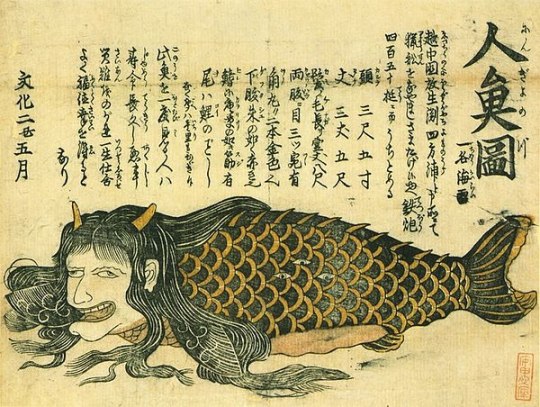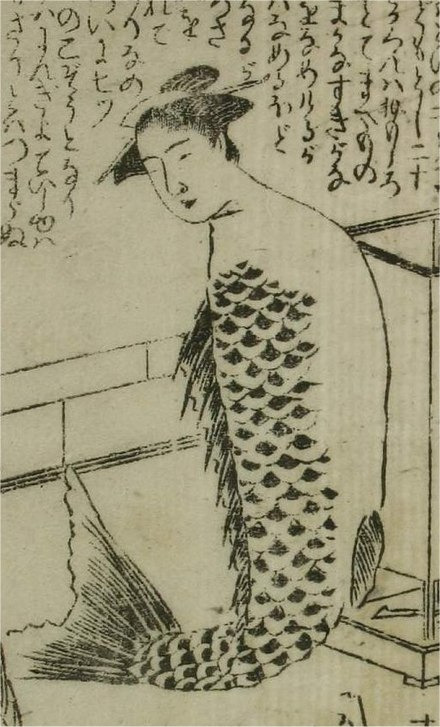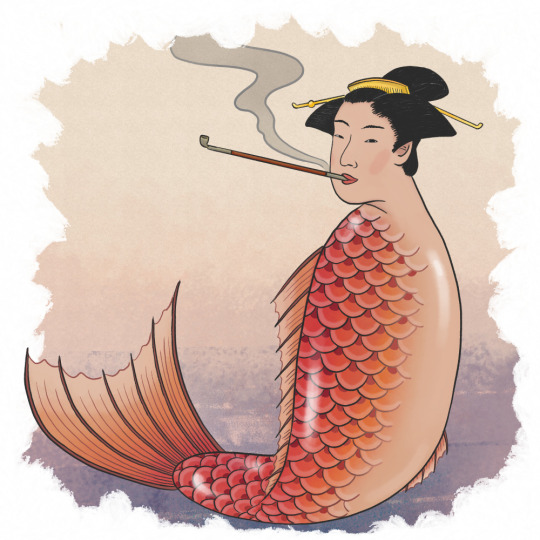Don't wanna be here? Send us removal request.
Photo

https://portal.ct.gov/DEEP/Fishing/Freshwater/Freshwater-Fishes-of-Connecticut/Bluegill
0 notes
Text
Anishinaabe & the Huron River -- Resources
https://michiganology.org/stories/the-indigenous-people-in-michigan/#:~:text=Michigan's%20three%20largest%20tribes%20are,called%20the%20Bode'wadmi).
http://www.historypbw.org/native-americans/
https://www.potawatomiheritage.com/
https://libguides.lib.msu.edu/c.php?g=95603&p=3067634
0 notes
Link

“It was handed down to the Suguro family, who served as the head of Toda and Tsumoto, and the original painting was exhibited at the 2006 special exhibition "Early modern and modern medical conditions" at the Numazu City Meiji Historical Museum. I have. It must have been handed down to the Suguro family with great care because it was effective during the Ansei cholera at the end of the Edo period."Kamiike Hime" has a fish body , a woman's face , a 5-shaku (about 1.5m) horn on the head, a 3 - jō 5-shaku (about 10.5m) length , 8-shaku (about 2.4m) hair , and 3 tails. A giant mermaid (human-faced fish) with a sword and three balls on each side of her stomach appeared in Hirado-go (Hizen Province, present-day Nagasaki Prefecture) in the late Edo period, during the Bunsei period, and prophesied a good harvest. However, it is written that he said, ``People without virtue will die of cholera for three days. In 1858, an epidemic of cholera broke out in Japan. It entered from Nagasaki and spread along the Tokaido, killing 30,000 to 40,000 people in Edo, and in Numazu in July of the same year. It is said that Shintama Inari Shrine in Shimogawara and Yoshida Shrine in Shimokanuki were sent to ward off this disaster. It is presumed that "Kamiike Hime" was probably painted around this time.“

“Amabie, a monster that wards off plagues, has become a hot topic in the world, but we also have it in Numazu! !A yokai that wards off epidemics in Toda, whose name is "Kamiikehime".This yokai says, ``Those without virtue will die within three days.At times like this, let's draw and copy and do the #Kamiikehime Challenge to pray for the end of the epidemic .If you can be positive by drawing and creating.If you can feel a little more fun by taking pictures.Designers, illustrators, and everyone who draws, wish for "Kamiike Hime"?”
0 notes
Link
“Jinjahime is a yokai that has been passed down in Japan since the Edo period.It looks like a mermaid with long hair, a human-like face, two horns, and a slender body with three tail fins. It is said that paintings of this figure are said to ward off epidemics.Jinjahime and Amabie are a kind of yokai called "prophetic beasts", and they predict future events such as good harvests and epidemics, and tell them how to ward off evil.Prophetic beasts have been depicted in prints and nishiki-e (a type of ukiyo-e) since the late Edo period, and were sought by commoners mainly for the purpose of warding off epidemics.”

0 notes
Photo

THE MONSTROUS FISH WITH A HUMAN FACE - CARP print
We are excited to offer these very decorative and extremely rare woodcut engravings from Aldrovandi’s exceptional volume on fishes, whales and sea monsters, “De Piscibus libri V”, published in Bologna, Italy, in 1638. With fine later hand colouring.
copied from Conrad Gesner

source

source
0 notes
Photo

"'Ningyo no zu": A woodblock-printed flier dated 5th month of Bunka 2 (1805)
“My sticker was Inspired by a woodblock print from 1805, currently owned by the waseda museum. - The text on the flair states that this particular mermaid was captured alive in Toyama bay - May 2nd, 1805 and that she was 10.6 meters (35ft) long. – There are actually several different drawings/woodblock fliers documenting this particular mermaid incident she might also be a variant of the yokai known as kamiike hime but this illustration is my favorite.” (from sticker website)

Japanese mermaid (ningyo). Coiffed with nihongami hairstyle of the Edo Period.― Santō Kyōden Hakoiri musume menya ningyō (1791)
Japanese Ningyo 人魚
“The earliest records of the ningyo attested in written Japanese sources are freshwater beings allegedly captured in the 7th century, documented in the Nihon Shoki.[a] But subsequent examples are usually seawater beings.[5][b]
Its flesh is pleasant-tasting,[c] and the nun Yao Bikuni attained a 1,000-year longevity according to legend. However, catching a ningyo was believed to bring storms and misfortune, so fishermen who caught these creatures were said to throw them back into the sea. A ningyo washed onto the beach was an omen of war or calamity.[d]
An enduring legend relating to the ningyo concerns the eating of its flesh by a certain Yao Bikuni [ja] ("eight hundred [year old] Buddhist priestess') who is said to have gained longevity lasting 8 centuries.[7][8]”
Believed to have originated from Chinese Chiru; Ningyo refers to all types of fish/human hybrids
source
Modern interpretations by artists

source

source
3 notes
·
View notes
Photo






Chinese 赤鱬
“The chiru [zh] (赤鱬; "red ru fish".[3] Wade-Giles: ch'ih-ju; "red ju"[32]) is described in the Nan Shan Jing ("Classic of the Southern Mountains") as a human-headed fish. It is said to be found in the Qingqushan (青丘山 "Green-Hills Mountains") in the Pool-of-Yi (Yì zhī zé 翼之澤; "Carp-Wings Lake"). It is described as basically fish-form but having a human face, and issuing sounds like the mandarin duck. Eating it purportedly prevented scabies or itchy skin.[33][3]The illustration of the chiru from China may have influenced the legless, human-faced fish visualization of some of the ningyo in Japan, according to the hypothesis of Morihiko Fujisawa [ja].[34]“
source (Wikipedia)
source
Exisitng Versions (Real life animals)


Dugong (same family as manatee)

Chinese giant salamander
source
96 notes
·
View notes






















